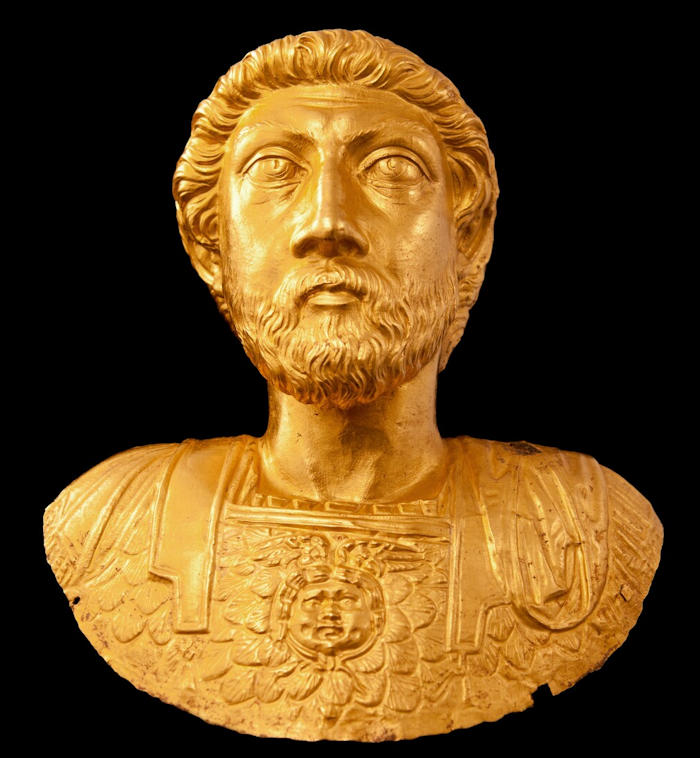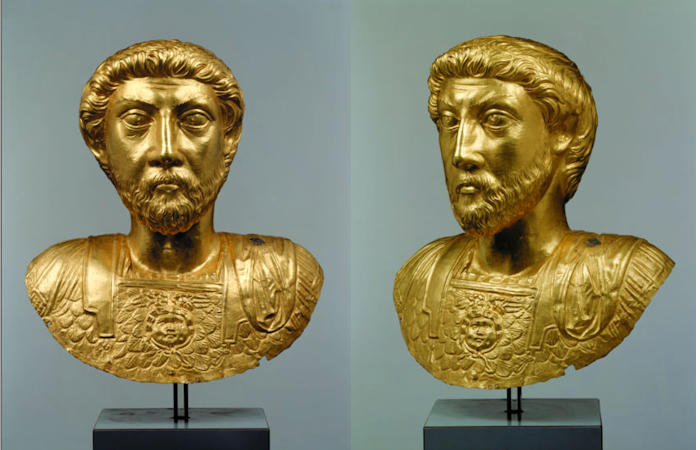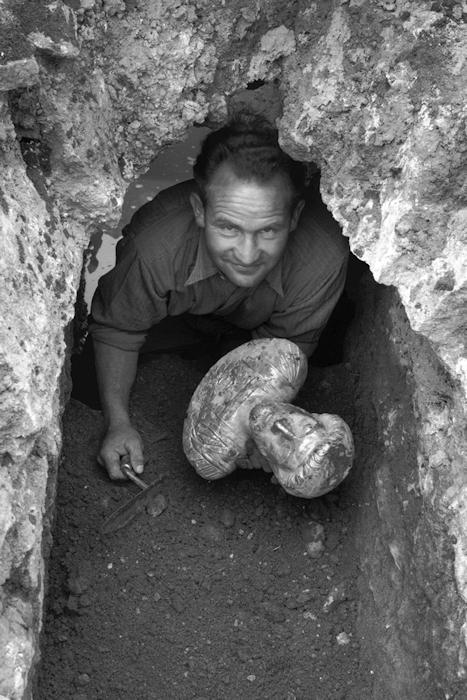Jan Bartek – AncientPages.com – The gold bust of Roman Emperor Marcus Aurelius is so precious it has only been displayed a dozens of times and never in the United States. Made by hammering a single sheet of gold, the bust is so valuable that it is usually kept in a bank vault. Instead of showing the original to the public, the Roman Museum of Avenches replaced it with a copy instead. Now, the Getty Villa Museum announced it presents The Gold Emperor from Aventicum, an exhibition showcasing a nearly life-size gold bust of the emperor Marcus Aurelius found at Aventicum (present-day Avenches, Switzerland), an ancient Roman city built on an earlier Celtic settlement.
If you are in the vicinity and are interested in archaeology, this is a unique opportunity to see a truly rare, ancient object.

Bust of Marcus Aurelius, Roman, 161–180 AD Gold 13 1/8 × 11 5/8 in Site et Musée romains d’Avenches et Musée cantonal d’archéologie et d’histoire, Etat de Vaud VEX.2023.3.1 Credit: Getty Villa Museum
The exhibition will be on view at the Getty Villa Museum from May 31, 2023, through January 29, 2024.
“The gold bust of Emperor Marcus Aurelius is one of the most spectacular archaeological discoveries of the 20th century,” says Timothy Potts, Maria Hummer-Tuttle and Robert Tuttle Director of the J. Paul Getty Museum. “Together with other objects from ancient Gaul, this remarkable imperial portrait sheds light on the wealth and power of the Roman Empire in Northern Europe with an exceptional loan that stunningly complements the Museum’s own collections of Roman imperial art.”

Credit: Getty Villa Museum
The Roman emperor Marcus Aurelius (ruled AD 161–180) was a highly respected ruler, a celebrated Stoic philosopher—his Meditations remain the main source of his fame—and a successful general who spent the later years of his reign fighting Germanic tribes on the northern border of the Roman Empire.
Weighing 3.5 pounds and hammered from a single sheet of metal, the hollow gold bust of the famous emperor was discovered in archaeological excavations at Aventicum in 1939. Workers exploring the site of a Roman religious precinct found the sculpture intact and in excellent condition, hidden in a sewage pipe. It had probably been concealed during a time of crisis, perhaps an invasion by Germanic tribes in the late third century AD.
The emperor wears a breastplate decorated with a winged head of the Gorgon Medusa, symbolizing protection. It was likely attached to a wooden structure that could be carried in ceremonial processions.

The discovery of the gold bust of Emperor Marcus Aurelius in 1939. Credit: Roman Museum of Avenches
This exhibition presents the bust together with other objects from the site, including Roman marble inscriptions of Celtic civic leaders and the Celtic goddess Anechtlomara, a mosaic panel found in Aventicum, and two drawings by the Swiss artist Joseph-Emanuel Curty documenting in detail other mosaics discovered in the city in 1786. Together, these objects provide a view of the provincial capital and its Celtic heritage and show the importance of imperial imagery and veneration in the Roman territories beyond Rome.
The ancient works included in this exhibition are on loan from the Musée romains d’Avenches and the Musée cantonal d’archeologie et d’histoire, Switzerland.
“The focus of the exhibition will be on the gold bust, but it will also provide a view of a Roman provincial city, the establishment of a non-Roman, native elite class, and the importance of imperial imagery,” says Jeffrey Spier, Anissa and Paul John Balson II Senior Curator of Antiquities at the Getty Villa Museum who curated the exhibition with Jens Daehner, ᴀssociate curator of antiquities.
Written by Jan Bartek – AncientPages.com Staff Writer





